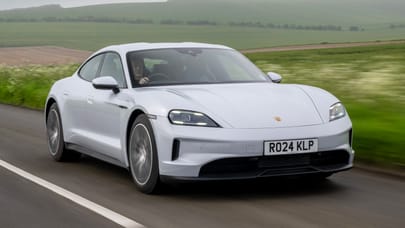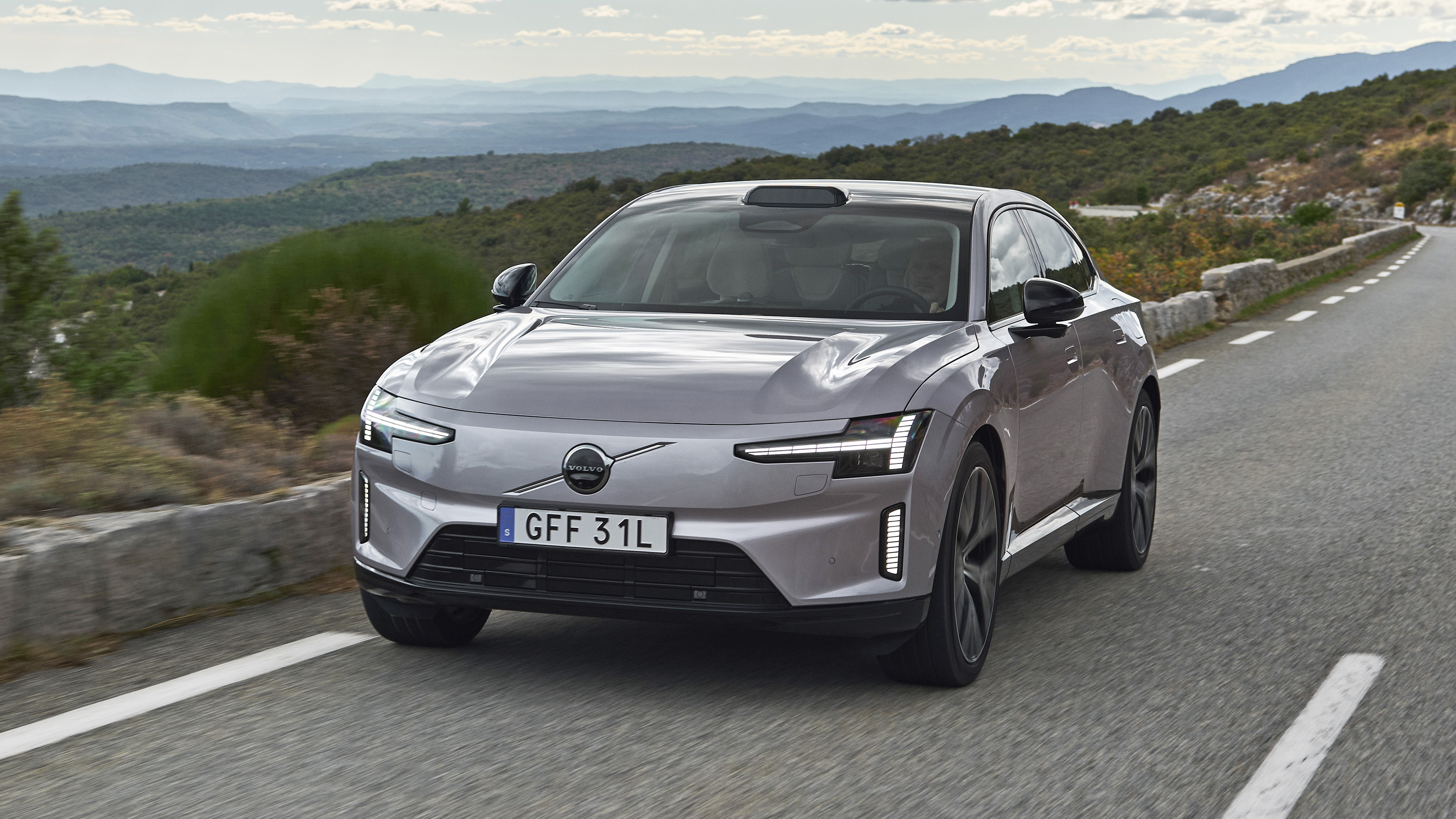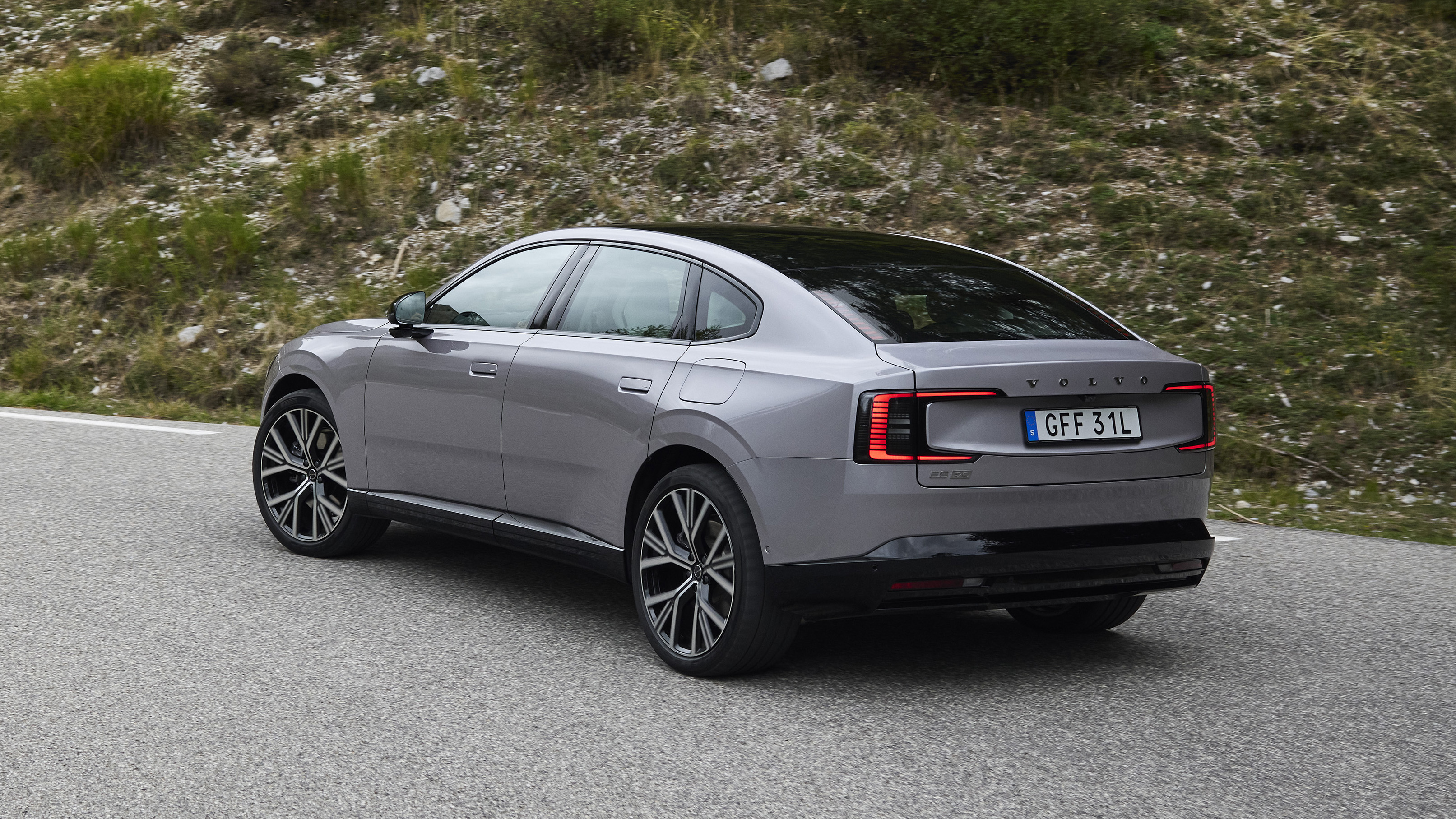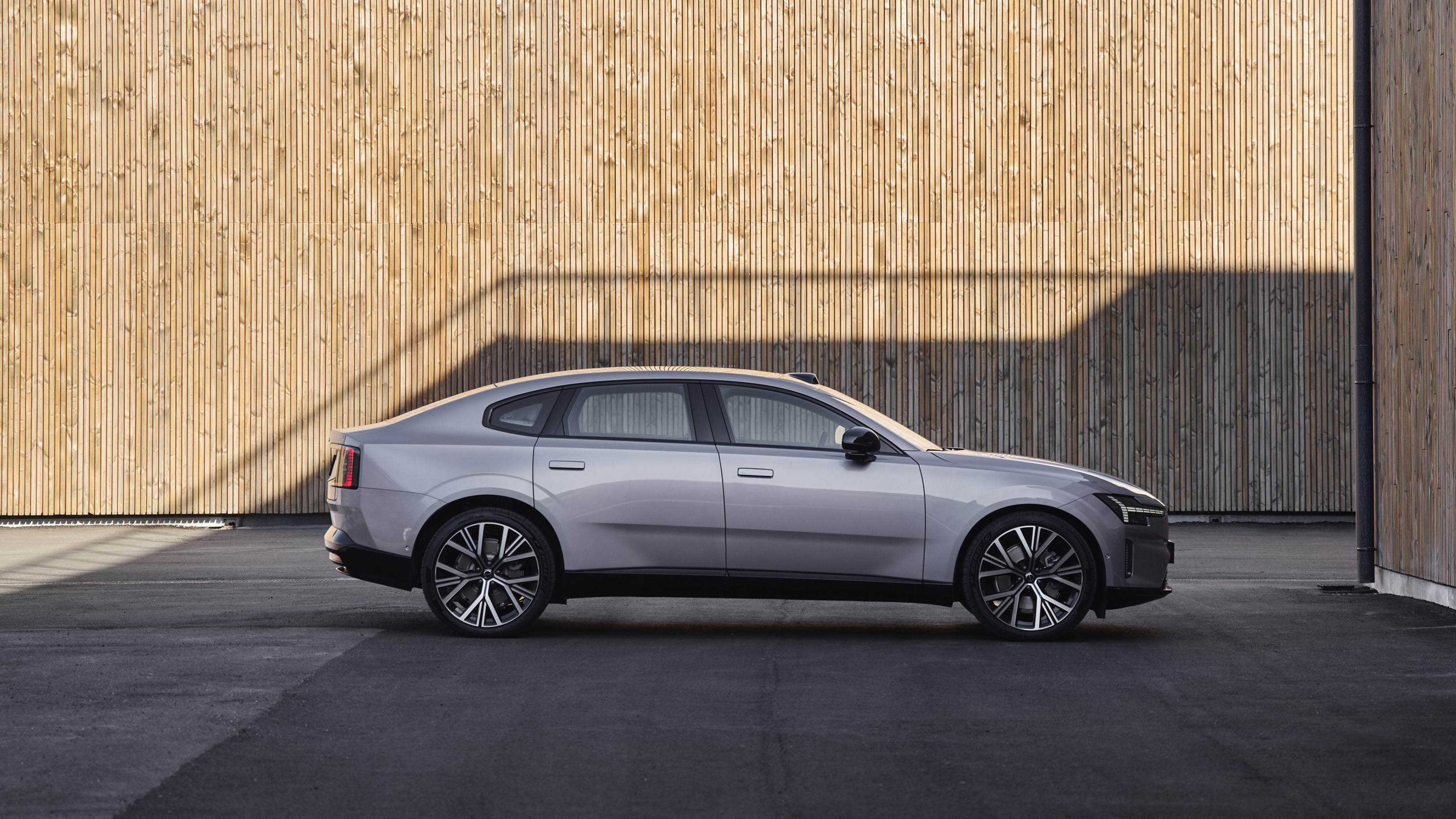
Good stuff
Extremely polished to drive, refined, beautiful interior, and looks good
Bad stuff
Let’s hope all the glitches have been ironed out. Drive experience could have more character
Overview
What is it?
It’s Volvo’s luxury saloon, exactly 5m long with a limo-like wheelbase and a reassuring sense of authority. Actually, saloon isn’t quite right. The ES90 sits higher than usual, which challenges the proportions somewhat. It’s more of a… saloon-over.
Rivals include the Audi A6 e-tron, BMW i5 and iX, Lucid Air, Mercedes EQE, Porsche Taycan, and the upcoming Polestar 5. Two specifications are available, Plus and Ultra, with prices starting at £69,760 for the former, £79,160 for the latter. That brings desirable additions such as an electrochromic roof, Bowers & Wilkins audio upgrade, and active air suspension.
What on earth is that thing on the roof?
Yes, about that. It’s the lidar, the sensor that underpins Volvo’s future-proofed commitment to safety. That’s been a brand USP since the early days, of course, but the new technical wonderland in which we now live widens the scope almost exponentially. Called Safe Space Technology, the ES90’s seven cameras, five radars, 12 ultrasonic sensors and lidar (just the one of those) give the car 360-degree oversight on the driving environment and collects real-time data on the road ahead. It can detect obstacles in the dark, too.
Volvo says its ‘driver understanding’ system uses bespoke algorithms to monitor driver attention and step in if support is needed. There’s even full sensor monitoring for the interior, sufficiently alert to detect sub-millimetre movement. And, of course, this car is primed to drive itself.
Looks like a taxi, don’t you think?
Inescapably, yes. Especially if you see a load of ES90s parked up outside a hotel. Car designers are grappling with the challenge of hiding the various gubbins that enable autonomous driving and all the rest of it. Sticking a sensor on the roof might be the most practical solution but it detracts from the ES90’s otherwise supremely Scandi-modernist aesthetic. TopGear.com understands that a work-round is well advanced, and that the next-gen Lidar – it’s made by a company called Luminar – will likely be incorporated into the windscreen surround.
The ES90 is otherwise clean, strongly surfaced, and imposing. We like the ‘Thor’s hammer’ lights and smooth nosed frontal aspect. You may struggle to spot a through-line from the 264 or 760 to this but it’s there in terms of sheer heft. (Volvo reckons the Bertone-designed 780 coupe from the late Eighties was an influence.)
It’s also not without its quirks. It sits unusually high, with a raised H-point, and has a fastback rather than a conventional boot. Volvo’s explanation for this uncharacteristic piece of category busting is to combine the driving position and ground clearance of an SUV with something classically noble. Note, though, that it’s very aerodynamically efficient, cleaving the air with a drag co-efficient of 0.25. The barn door aero of those classic Seventies and Eighties Volvos is a thing of the past. It’s also sustainable: Volvo says about 63 per cent of the ES90 is made of recycled materials.
Presumably an electric Volvo is a bit more sprightly, too.
Indeed. Three powertrain options are available in two battery sizes. As is the modern way, the ES90 represents an improvement over the EX90 – launched barely a year ago – in terms of energy management software and in the hardware. New adapative charging software comes from a company called Breathe Battery Technologies, which Volvo’s venture capital arm recently invested in.
The result is a longer range and more efficiency, with 92 kWh or 106 kWh battery packs available. They’re NMC – lithium ion with a combination of nickel, manganese and cobalt in their cathode. Particularly eco-conscious owners can trace the provenance of the raw materials via Volvo’s ‘battery passport’. This was developed by a British start-up called Circulor and uses blockchain technology to map supply chains. Scan a QR code on the driver’s door for more.
Very socially responsible. Stats, please...
Here’s how the line-up shakes out. The standard Single Motor, rear-wheel drive car has a projected WLTP range of 403 miles, and makes 328bhp and 354lb ft. Next up is the Twin Motor with all-wheel drive, good for 443bhp and 494lb ft and an eye-catching 434 mile range. Finally, there’s the Twin Motor Performance version, which ups the ante to 671bhp and 642lb ft.
The rear motor is a permanent magnet one that does the heavy lifting; the front one is asynchronous, magnet-free, and adds extra torque up front when required. There’s a new cooling system, revised inverter and power module, and reduced torque losses, claims Volvo.
The result is, by some margin, the most powerful car in the company’s history, more than anyone really needs, we’d wager, although we’ll have to revisit that because we’ve only tried the Single Motor car so far. Anyway, the 0-62mph times are 6.9secs, 5.6secs, and 4.0secs respectively, although top speed across the board is limited to 112mph. Sensible.
Isn’t the speed of charging just as important?
True. Perhaps even more important than the overall range. The ES90 is an improvement on the EX90 here, too, not least because it runs an 800-volt configuration rather than the SUV’s 400-volt one, so it delivers more power and range with the same current. Hooked up to a 350 kW charger, the Twin Motor version can add 186 miles in 10 minutes, go from 10 per cent SOC to 80 per cent in 22 minutes. Volvo’s third generation electric drivetrain is also bi-directional, so you can use it to power your home or to return energy to the grid. It’s ticking all the currently available boxes.
What about the connectivity?
Interesting question. The ES90 is Volvo’s second ‘software-defined’ car, a concept the company hasn’t leaned into so much as given an almighty bear hug.
What does it mean? It uses the company’s so-called Superset tech stack, which consists of a single set of hardware and software modules, developed through a closed loop process. The ES90, though, has a significant upgrade, and benefits from a dual Nvidia Drive AGX Orin processor that can carry out 508 trillion operations per second.
A bit faster than my old ZX Spectrum. And how is it?
Well, that’s a more pertinent question than ever. That’s roughly twice the firepower of the EX90’s set-up, though that model’s getting the upgrade for MY 2026. The ES90’s software definition means that it’s one of those modish cars that will receive regular ‘over-the-air’ updates, so that it’s constantly evolving.
That’s the glass half-full way of looking at it, anyway. A more Eeyore-ish take might be that companies are getting into the habit of launching cars before they’re fully finished. The Volvo EX90 has only just arrived in the UK, more than a year after its launch, and a glance at some of the online forums amongst American owners confirms that the first cars have been glitchy. We also know from experience in the related Polestar 3 that the software has problems defining itself, shall we say. That said, our drive in the ES90 was absolutely flawless in this regard.
How good an actual car is it?
As with its SUV brother, it’s impressive. You would naturally expect a large and luxurious saloon to ride well and to deliver refinement. The ES90 is exemplary in both regards and must surely be one of the quietest cars we’ve ever tested.
Its steering is as clear and lucid as a Swedish lake, and the least powerful single motor car – 328bhp – gets along the road sufficiently swiftly to have you questioning the need for more. Its (optional) dual-chamber air suspension gives it an appropriately plush ride quality. It handles pretty well, too, although it’s not as good as the Audi A6 e-tron or BMW i5 in that regard. But who buys a premium EV in search of B-road jollies?
What's the verdict?
The ES90 follows the EX90 in Volvo’s complete embrace of electrification. While an SUV might be the default choice for the (upper) middle class family these days, there’s something compelling about a well-executed high-end saloon. The ES90 is certainly well conceived, and takes a whole host of the company’s core values and reimagines them for the EV world.
In particular, it pulses with the latest and most relevant tech, and upgrades to its software and processing power should eradicate the problems that have afflicted the EX90. It’s a sublime place to sit and spend time, thoughtfully designed, and though the single motor car is no rocket ship, its sublime refinement and superb manners atone for any palpable lack of drama.
The Rivals
Trending this week
- Car Review
BMW iX3









